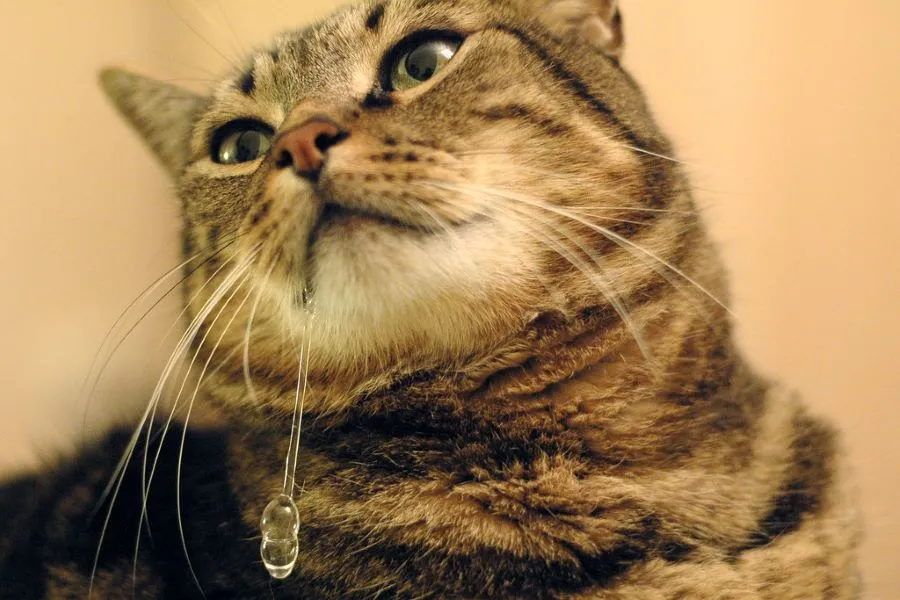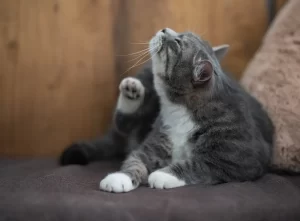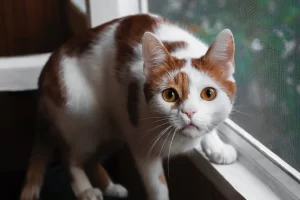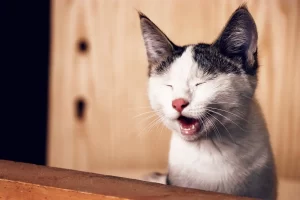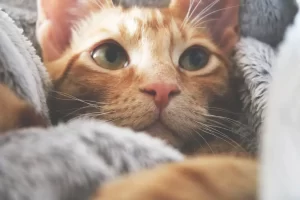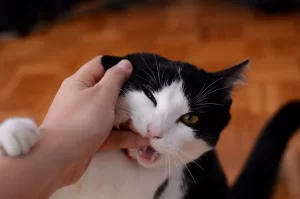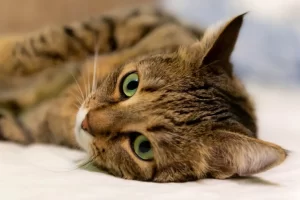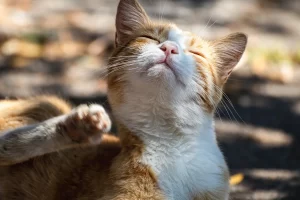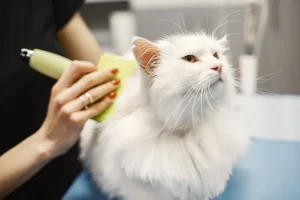Cat drooling, also known as hypersalivation or ptyalism, can be a concerning condition for cat owners. While there are various causes of cat drooling, ranging from dental issues and oral infections to systemic diseases and stress-induced factors, many cat owners may be interested in exploring home remedies as a potential management option. Home remedies for cat drooling are often sought after due to their accessibility, affordability, and potential for providing relief to cats in the comfort of their own home. However, it is crucial to approach home remedies with caution and seek professional veterinary advice before attempting any treatment at home.
Table of Contents
ToggleIntroduction to Cat Drooling
Cat drooling, also known as ptyalism or hypersalivation, is a condition where a cat produces excessive saliva and drools excessively from its mouth. While occasional drooling in cats can be normal, persistent or increased drooling can be indicative of an underlying health issue.
Causes of Cat Drooling
Cat drooling can be caused by various factors, including:
- Dental issues: Dental problems such as gum disease, tooth decay, or oral infections can cause cat drooling. Cats may drool excessively due to pain or discomfort in their mouths, which can result in increased saliva production.
- Oral infections: Infections in the oral cavity, such as stomatitis or gingivitis, can cause cat drooling. Inflammation and infection in the oral tissues can lead to increased saliva production and subsequent drooling.
- Oral tumors: Tumors or growths in the oral cavity, including the tongue, gums, or salivary glands, can cause cat drooling. These tumors can disrupt normal saliva production and flow, leading to excessive drooling.
- Nausea: Cats may drool excessively due to nausea or an upset stomach caused by various reasons such as gastrointestinal issues, motion sickness, or certain medications. Increased saliva production is a common physiological response to nausea in cats.
- Systemic diseases: Underlying systemic diseases such as kidney disease, liver disease, or hyperthyroidism can cause cat drooling. These diseases can affect the normal functioning of the salivary glands and result in excessive drooling.
Symptoms of Cat Drooling
The symptoms of cat drooling can vary depending on the underlying cause and may include:
- Excessive saliva production leading to visible drooling from the mouth.
- Wet fur around the mouth or chin area.
- Increased licking or grooming of the lips or mouth.
- Pawing at the mouth or rubbing the face against objects.
- Bad breath or foul odor from the mouth.
- Difficulty eating or drinking.
- Signs of discomfort or pain, such as pawing at the mouth or reluctance to open the mouth.
- Changes in appetite or weight loss.
Home Remedies for Cat Drooling Caused by Dental Issues
Dental problems can be a common cause of cat drooling. Proper dental hygiene is essential to maintain oral health and prevent dental issues in cats. In addition to regular professional dental care provided by a veterinarian, there are several home remedies that may help with cat dental issues. However, it is important to note that these remedies should be used with caution and under the guidance of a qualified veterinarian. Here are some practical home remedies for dental issues that may cause cat drooling:
- Dental Hygiene Practices: Regular brushing of a cat’s teeth using a feline-specific toothbrush and toothpaste can help remove plaque and prevent dental issues such as tartar buildup and gum disease. This can be done at home with patience and consistency. It is important to follow proper brushing techniques and use products specifically formulated for cats to avoid harm to the cat.
- Dental Chews: There are dental chews available in the market that are designed to help clean a cat’s teeth and promote oral health. These chews are usually formulated with enzymes or abrasives that can help reduce plaque and tartar buildup. However, it is crucial to choose dental chews that are appropriate for a cat’s size, age, and dental health condition, and to use them as directed.
- Dental Rinses: Dental rinses formulated for cats can help freshen breath and reduce bacteria in the mouth. These rinses can be used as an adjunct to brushing and may help in managing dental issues. It is important to follow the instructions provided by the manufacturer and consult a veterinarian for the appropriate use and dosage.
- Natural Remedies: Some natural remedies may also be used for cat dental issues. For example, coconut oil pulling involves swishing a small amount of coconut oil in a cat’s mouth to help reduce bacteria and plaque. Herbal remedies, such as using chamomile or calendula infused water as a mouth rinse, may also be used with caution. However, it is important to remember that natural remedies may not be as effective as professional dental care, and their safety and efficacy may vary.
Home Remedies for Cat Drooling Caused by Oral Infections
Oral infections, such as stomatitis or gingivitis, can be a potential cause of cat drooling. These infections can cause inflammation and discomfort in a cat’s mouth, and prompt treatment is necessary to prevent further complications. While professional veterinary care is crucial for proper diagnosis and treatment of oral infections, there are some home remedies that may help in managing these conditions. It is important to note that these remedies should be used with caution and under the guidance of a qualified veterinarian. Here are some practical home remedies for oral infections that may cause cat drooling:
- Rinsing with Saltwater or Chlorhexidine Solution: Saltwater or chlorhexidine solution can be used as a mouth rinse to help reduce inflammation and bacteria in the mouth. To prepare a saltwater rinse, dissolve half a teaspoon of salt in one cup of warm water, and use a cotton ball or clean cloth to gently apply it to the affected areas in the cat’s mouth. Chlorhexidine solution can be purchased from a veterinary clinic and used as directed by the veterinarian. It is important to avoid swallowing the solution and rinse the mouth thoroughly with water after application.
- Antiseptic Mouthwashes: There are antiseptic mouthwashes available in the market that are specifically formulated for cats and can be used to rinse the mouth and help reduce bacteria and inflammation. These mouthwashes should be used as directed by the manufacturer and under the guidance of a veterinarian, as some may contain ingredients that can be harmful to cats if ingested.
- Natural Remedies: Some natural remedies may also be used for managing oral infections in cats. For example, calendula or goldenseal infused water can be used as a mouth rinse to help reduce inflammation and promote healing. However, it is important to consult a veterinarian for proper dosage, application, and safety of natural remedies, as some may not be suitable for cats or may have potential side effects.
- Soft Food or Wet Food Diet: Feeding a cat with soft food or wet food diet may help in managing oral infections by reducing the mechanical irritation on the inflamed areas of the mouth. Soft food or wet food can be easier to eat and less abrasive to the gums and teeth compared to dry food. It is important to consult a veterinarian for appropriate dietary recommendations for a cat with oral infections.
- Regular Oral Hygiene: Maintaining good oral hygiene is crucial in managing oral infections in cats. Regular brushing of a cat’s teeth, as discussed in the previous section, can help remove plaque and prevent further inflammation. Gentle brushing or wiping of the cat’s gums and teeth with a feline-specific toothbrush and toothpaste can help reduce bacteria and promote oral health.
Home Remedies for Cat Drooling Caused by Oral Tumors
Oral tumors in cats can be a serious condition that requires proper diagnosis and treatment by a qualified veterinarian. However, in some cases, there may be home remedies that can be used as adjuncts to veterinary care to help manage the symptoms or discomfort associated with oral tumors. It is important to note that these remedies should be used with caution and under the guidance of a veterinarian. Here are some potential home remedies for oral tumors in cats:
- Anti-inflammatory Herbs: Some herbs have anti-inflammatory properties and may help reduce inflammation and discomfort associated with oral tumors. Examples of such herbs include turmeric, ginger, and licorice root. These herbs can be given to cats in the form of supplements, teas, or as a part of their diet. However, it is important to consult a veterinarian for proper dosage, administration, and safety of these herbs, as some may have potential side effects or interact with other medications.
- Cold Compresses: Applying cold compresses to the external area of the cat’s mouth may help reduce swelling and discomfort caused by oral tumors. A cold compress can be made by wrapping a few ice cubes in a towel and gently applying it to the affected area for a few minutes at a time. It is important to be cautious and not directly apply ice or very cold compresses to the cat’s mouth, as it may cause frostbite or discomfort.
- Homeopathic Remedies: Some homeopathic remedies may be used as adjuncts to veterinary care in managing oral tumors in cats. Homeopathic remedies are individualized and selected based on the cat’s specific symptoms and constitution, and should be prescribed by a qualified veterinarian trained in homeopathy. Examples of homeopathic remedies that may be used for managing oral tumors in cats include Calcarea carbonica, Thuja occidentalis, and Silicea. It is important to consult a veterinarian trained in homeopathy for proper prescription and administration of homeopathic remedies.
- Soft Food or Wet Food Diet: Feeding a cat with soft food or wet food diet may help in managing oral tumors by reducing mechanical irritation on the tumor and surrounding tissues. Soft food or wet food can be easier to eat and less abrasive to the affected area compared to dry food. It is important to consult a veterinarian for appropriate dietary recommendations for a cat with oral tumors, as dietary changes may need to be tailored to the cat’s specific condition and overall health.
Home Remedies for Cat Drooling Caused by Nausea
Nausea can be a common cause of cat drooling and can be caused by various factors such as gastrointestinal issues, motion sickness, or other underlying health conditions. Here are some potential home remedies for managing nausea in cats:
- Bland Diet: Providing a bland diet to cats with nausea can help soothe the stomach and reduce the risk of vomiting. A bland diet typically consists of boiled chicken or boiled fish with plain white rice. It is important to consult a veterinarian for proper portion sizes and feeding frequency based on the cat’s age, weight, and overall health condition.
- Avoiding Trigger Foods: Cats with nausea may have certain trigger foods that can worsen their symptoms. Identifying and avoiding these trigger foods can help manage nausea. Examples of common trigger foods for cats can include dairy products, fatty foods, or foods high in fiber. Keeping a food diary and monitoring the cat’s response to different foods can help identify trigger foods and avoid them in the diet.
- Ginger or Peppermint: Ginger and peppermint are known for their natural anti-nausea properties and may help manage nausea in cats. Ginger can be given in small amounts as a grated ginger root or ginger powder mixed with food, or as ginger-infused water or tea. Peppermint can be given as a small amount of fresh or dried peppermint leaves, or as peppermint-infused water or tea. However, it is important to consult a veterinarian for proper dosage and administration, as excessive amounts of ginger or peppermint can potentially be toxic to cats.
- Hydration: Maintaining adequate hydration is important for managing nausea in cats. Cats with nausea may not want to drink water or eat, which can lead to dehydration. Offering fresh water or water-based fluids such as low-sodium chicken broth or tuna juice can help keep the cat hydrated and may help alleviate nausea.
- Environmental Management: Cats can also experience nausea due to motion sickness caused by car rides or other environmental factors. Minimizing or avoiding such triggers can help manage nausea in cats. For example, providing a comfortable and stable environment for the cat during car rides, using a carrier with good ventilation and providing fresh air, or avoiding sudden movements or changes in the cat’s environment can help reduce motion sickness-related nausea.
Nutritional Considerations for Cat Oral Health
A balanced and appropriate diet plays a crucial role in maintaining overall oral health in cats. Providing a cat-friendly diet that promotes dental health can help reduce the risk of oral issues, including excessive drooling. Here are some practical nutritional considerations for promoting good oral health in cats:
- Cat-friendly Diet: Feeding a high-quality cat food that is complete and balanced, and meets the specific nutritional needs of cats, is essential for overall oral health. Look for cat foods that are approved by veterinary organizations and have undergone AAFCO (Association of American Feed Control Officials) feeding trials to ensure they provide all the necessary nutrients. Consider choosing dry kibble or dental-formulated cat food that has a larger kibble size or a special texture that promotes chewing, which can help remove plaque from the teeth as the cat chews.
- Dental-friendly Treats: Offering dental-friendly treats can be a beneficial addition to a cat’s diet for promoting good oral health. Look for dental chews or treats that are specifically designed to help remove plaque and tartar from the teeth. Dental treats that have a firm texture or are formulated with dental enzymes can help reduce plaque buildup and freshen breath. Follow the recommended feeding instructions and do not exceed the recommended amount to avoid overfeeding.
- Supplements: Some supplements may also support oral health in cats. For example, there are dental health supplements available that contain ingredients like enzymes, probiotics, or antioxidants that can help reduce plaque formation and promote healthy gums. However, it’s important to consult with a veterinarian before giving any supplements to ensure proper dosage and suitability for the specific cat’s health condition.
- Feeding Practices: Proper feeding practices can also impact oral health in cats. Avoid leaving food out for extended periods, as it can promote plaque buildup and dental issues. Instead, feed cats at regular intervals and remove any uneaten food after feeding. Feeding wet food or adding water to dry kibble can help increase moisture in the mouth and promote saliva production, which can help wash away food particles and reduce the risk of dental problems.
Keep Your Cat Hydration for Better Oral Health
Adequate hydration is crucial for overall oral health in cats and can also help manage drooling. Here are some important points to consider regarding hydration and potential home remedies for increasing water intake in cats:
- Provide Fresh Water: Cats should always have access to clean, fresh water throughout the day. Make sure to refill water bowls regularly and clean them daily to prevent bacterial growth. Place water bowls in easily accessible areas and consider offering multiple water sources in different areas of the house.
- Encourage Drinking: Cats are notorious for not drinking enough water, so it’s essential to encourage them to drink. Try offering water in different types of bowls, such as shallow and wide bowls or cat fountains, as some cats may have preferences for certain types of bowls. Experiment with different water temperatures, as some cats prefer cool or room temperature water. You can also try placing water bowls in areas where your cat likes to spend time, such as near their food bowl or resting spots.
- Ice Cubes: Some cats enjoy playing with ice cubes and licking them, which can help increase water intake. Consider offering a few ice cubes in your cat’s water bowl to entice them to drink more water. However, be cautious with cats that have dental issues, as ice cubes may be too hard for them to chew.
- Flavored Water: Cats are more likely to drink water that has a taste they find appealing. You can try adding a small amount of low-sodium chicken broth, tuna juice (from canned tuna in water), or water from canned food to your cat’s water bowl to provide a hint of flavor and encourage them to drink more water. However, be mindful of the sodium content and avoid adding excessive amounts, especially if your cat has any underlying health conditions that require a low-sodium diet.
- Wet Food: Feeding your cat wet food, such as canned food or raw food with high moisture content, can also help increase their overall water intake. Wet food can contribute to their overall hydration and promote saliva production, which can help wash away food particles and reduce the risk of dental problems.
Environmental Enrichment for Managing Cat Drooling
Stress and anxiety can be a trigger for drooling in cats. Providing a stress-free environment and engaging in environmental enrichment activities can help reduce stress-induced drooling. Here are some tips for environmental enrichment to consider:
- Reduce Stressors: Identify and eliminate any potential stressors in your cat’s environment. This may include providing a quiet and peaceful space for your cat, avoiding sudden loud noises, minimizing changes in routine, and providing a safe and secure hiding spot for your cat to retreat to when feeling stressed.
- Provide Toys and Playtime: Toys and playtime can help keep cats mentally and physically stimulated, reducing stress and anxiety. Offer a variety of toys that encourage natural behaviors, such as hunting, chasing, and pouncing. Rotate toys to keep them interesting and engage in interactive play sessions with your cat to build a bond and provide mental stimulation.
- Vertical Space: Cats are natural climbers and love to perch up high to observe their surroundings. Providing vertical space, such as cat trees or shelves, can help cats feel safe and secure in their environment and reduce stress.
- Scratching Posts: Scratching is a natural behavior for cats and can help them release stress and anxiety. Provide appropriate scratching posts or pads to redirect their scratching behavior and prevent damage to furniture or other household items.
- Hideouts and Resting Spots: Cats also need places to hide and rest. Provide cozy hiding spots, such as cardboard boxes, cat caves, or covered beds, where your cat can feel safe and secure when they want to retreat and relax.
- Routine and Predictability: Cats thrive on routine and predictability. Establish a consistent daily routine for feeding, playtime, and other activities to reduce stress and anxiety in your cat. Avoid sudden changes or disruptions to their routine whenever possible.
Potential Complications of Cat Drooling
If left untreated, cat drooling can lead to potential complications, such as:
- Dehydration: Excessive drooling can lead to dehydration, especially if the cat is unable to drink enough water due to discomfort or pain in the mouth.
- Secondary infections: Persistent drooling can result in wetness around the mouth, which can create a favorable environment for bacterial growth and potentially lead to secondary infections, such as skin infections or oral infections.
- Nutritional deficiencies: Cats may have difficulty eating or drinking normally due to excessive drooling, which can result in nutritional deficiencies over time, leading to further health complications.
- Oral health issues: Cat drooling can be indicative of underlying dental or oral health issues, which, if left untreated, can worsen and result in oral pain, tooth loss, and other oral health problems.

